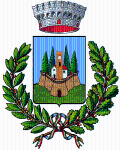Descrizione
Fortilizio nel controllo dei Berardenghi di Valcortese, feudatari discendenti da Guinigi fondatore dell’Abbazia a Monastero. Il fabbricato dell’ex podere omonimo contiene alcuni resti di questa antica presenza. Il primo documento che cita il Castello di Ripalta è dell’anno 1071 e le carte dei monaci dell’Abbazia menzionano il toponimo in molti documenti, l’ultimo nell’anno 1228.
Nel 1186 la chiesa di Santa Maria a Ripalta è citata alle dipendenze dell’Abbazia in un privilegio di Papa Urbano III, nel 1234 subì l’assedio dell’esercito fiorentino,
e così nel 1251, quando nell’attacco furono coinvolti anche Orgiale e Valcortese. Da metà XIII secolo, Ripalta comincia ad essere citato assieme a Sestano, nel 1320 è un comunello composto da 5 località e un totale di 20 case, oltre il Molino sull’Ombrone. La comunità di Ripalta e Sestano saranno impegnate nella costruzione del Castello Nuovo (dal 1366) e nel primo comune della Berardenga ( 1367).
Ripalta, qualificato come podere, con gli altri di Bergallo e Melariano, mantiene un suo prestigio anche nella seconda metà del 1600, quando dà il nome ad un comunello che comprende ben 29 poderi. Il confine tocca i resti delle mura del Castello della Berardenga dispiegandosi verso nord in un territorio vasto. In questi anni e fino al 900’ Ripalta era proprietà dei Saracini.
Tutta la zona attorno a Ripalta risultò fin dal 1820 ( ritrovamento di una necropoli ) luogo di frequentazione antica in particolare fra III° e I° sec. a. C.
English version:
A fortress under the control of the Berardenghi di Valcortese, feudal lords and descendants of Guinigi, the founder of the Abbey at Monastero. The old farmhouse building contains some vestiges of this ancient presence. The earliest document citing the Castle of Ripalta is from 1071, and numerous documents from among the papers of the monks at the Abbey mention the toponym, with the last mention in 1228.
In 1186 the church of Santa Maria a Ripalta was indicated as being under the aegis of the Abbey by papal privilege decreed by Pope Urban III, and in 1234 was attacked by the Florentine army, as again in 1251, when Orgiale and Valcortese were also involved. Starting in the mid-13th century, Ripalta began to be mentioned together with Sestano, and in 1320 was part of a common made up of 5 localities and a total of 20 houses, as well as the Mill on Ombrone. The communities of Ripalta and Sestano were involved in the construction of the Castello Nuovo (1366) and the first Berardenga comune (1367).
Ripalta, categorized as a farm, along with others called Bergallo and Melariano, maintained a certain prestige into the second half of the 17th century, when it gave its name to a common comprising 29 farms. The boundary line touched the remains of the wall of the Castle of the Berardenga and stretched northward to incorporate a vast area. In that era and at the end of the 20th century, Ripalta was owned by the Saracini family.
Since the 1820 discovery of a necropolis, the entire zone around Ripalta has been identified as having been frequented in antiquity, particularly from the 3rd to 1st centuries a.C.
Modalità d'accesso
sempre aperto
Indirizzo
Punti di contatto
Ultimo aggiornamento: 4 marzo 2024, 12:21

